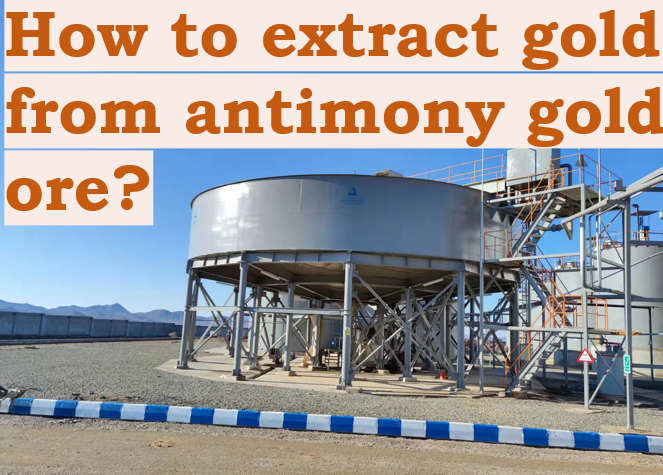Antimony gold ore is one of the important gold resources. Its characteristic is that gold is wrapped or dispersed in sulfide minerals such as stibnite, arsenopyrite and pyrite in the form of fine particles, which makes this type of ore a type of gold ore that is difficult to beneficiate
The traditional direct cyanide leaching method has unsatisfactory leaching efficiency due to the fine gold particles and the high consumption characteristics of stibnite. Therefore, for the beneficiation of antimony gold ore, the industry usually adopts flotation, pretreatment and enhanced leaching technologies.
Flotation is very effective in treating ore types that do not use antimony minerals as gold carriers. This method separates antimony minerals and gold-containing sulfide minerals by flotation, avoiding the complicated pretreatment process, and can obtain antimony by-products at the same time, thereby reducing the overall cost. However, the operation of the flotation method is relatively complicated, and it is necessary to minimize the loss of gold while ensuring the quality of the antimony concentrate.
Flotation is mainly divided into mixed flotation and preferential flotation. Although the mixed flotation method has a simple process flow, it is easy to cause gold-bearing minerals to mix into antimony concentrates, affecting the quality of the final product and causing gold losses. The preferential flotation method preferentially floats antimony minerals and then processes gold-bearing minerals, but this method may increase antimony losses and require additional acid to adjust the pH value, increasing costs and possibly causing adverse effects on the environment.

The pretreatment method is suitable for ores where gold is present in antimony minerals or where the antimony grade is low. Physical or chemical pretreatment can improve the conditions for cyanide leaching and increase the leaching rate of gold. There are two pretreatment methods for antimony gold ores: roasting and chemical alkaline leaching.
The roasting method changes the ore structure through high-temperature oxidation, converting stibnite into oxides that are easier to handle, thereby improving the leaching efficiency of gold. Although the roasting method can effectively increase the leaching rate, the accompanying minerals such as arsenic and sulfur may cause environmental problems and have high energy consumption.
The chemical alkaline leaching method uses the solubility characteristics of antimony minerals under alkaline conditions to remove these minerals in advance and reduce consumption during cyanide leaching. Compared with the roasting method, the chemical alkaline leaching method may have a slightly lower cyanide leaching rate, but it is fast to operate, short cycle, less pollution and low cost.

The enhanced leaching method suppresses the cyanide and oxygen consumption reaction of stibnite by adding leaching aids such as lead acetate and lead nitrate in the cyanide leaching stage, and uses oxidants such as potassium permanganate to accelerate the oxidation of stibnite and improve the leaching activity and rate of gold. This method does not require pretreatment of the original ore, which can speed up the leaching speed and efficiency, but is not suitable for ores with severe gold encapsulation.
In summary, the beneficiation of antimony-bearing gold ores requires the selection of appropriate methods according to the specific characteristics of the ore. Before actual operation, it is crucial to conduct detailed beneficiation tests to understand the properties of the ore to ensure the selection of scientific and reasonable beneficiation methods and equipment to avoid blind application and waste of resources.
© 2021 Yantai KZ Mining Processing Technology & Equipment Inc.